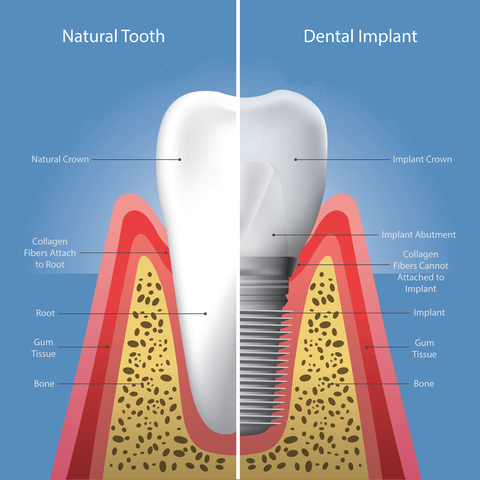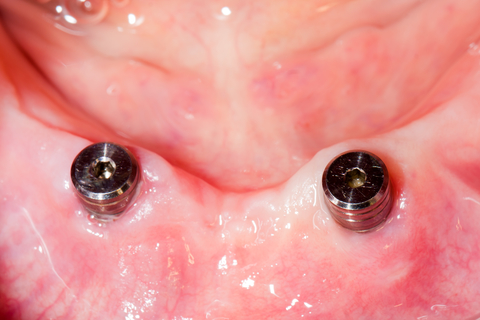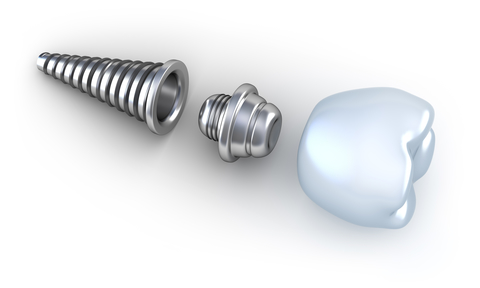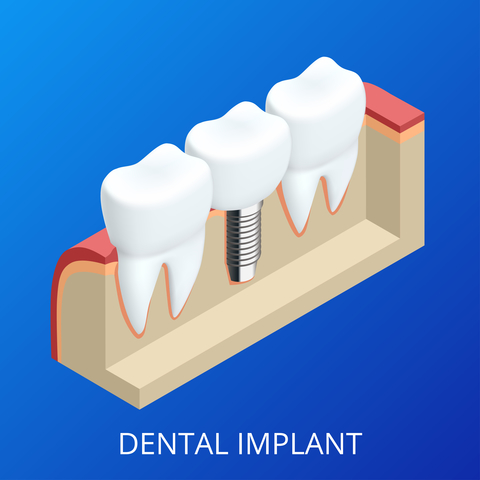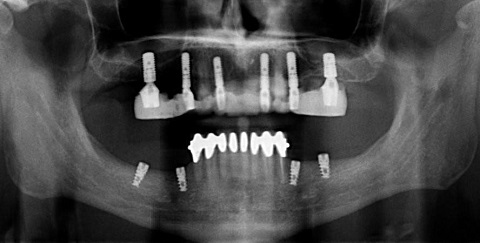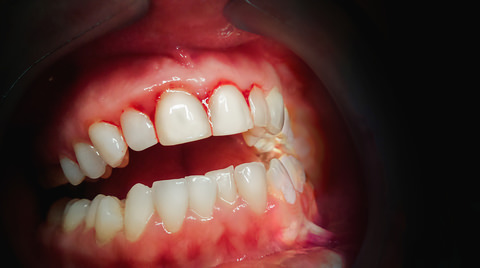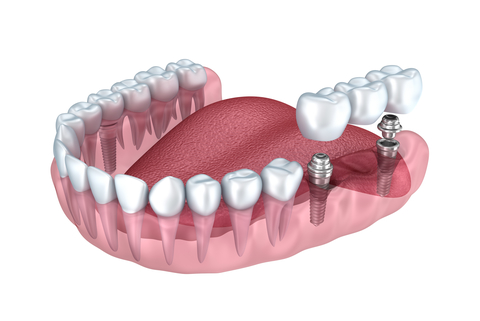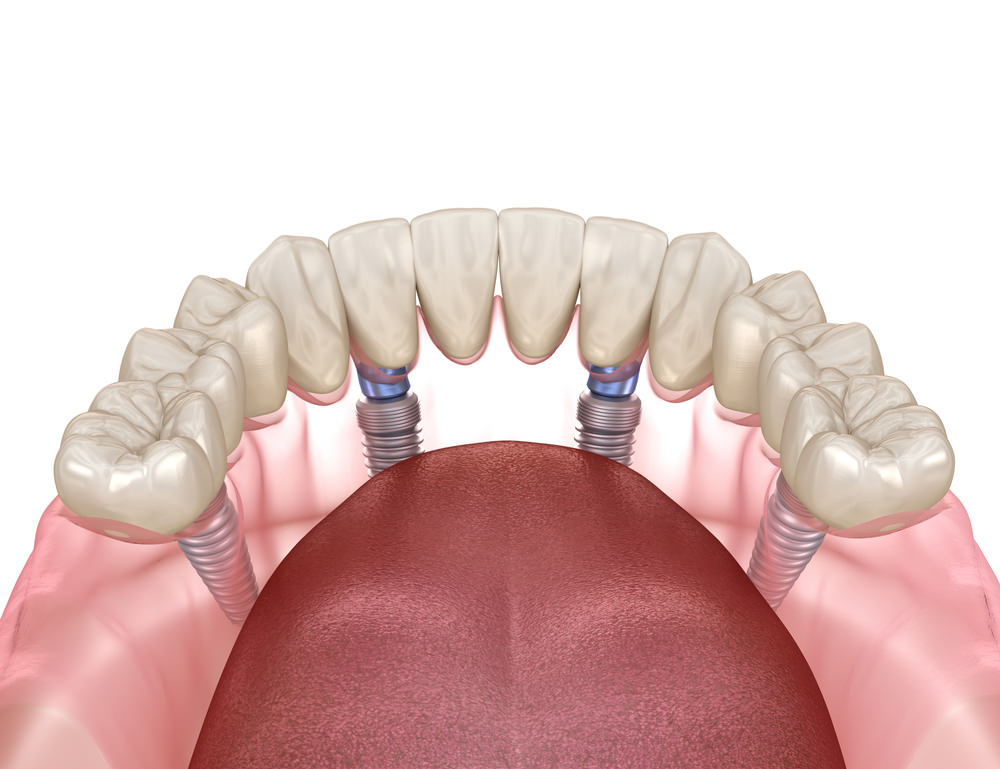Finding a Solution with Dental Implants
Dental implants have become the preferred option in recent years to bridge the gap in your smile (forgive the pun).
This post will run through all you need to know about this No.1 option so that you can make an informed decision and save money in the process.
This post on dental implants can provide you with a wealth of knowledge.
If you have any dental implant related questions after reading through, please leave a comment below the post and I will respond to you.
Jump to Contents
- What are Dental Implants?
- What are the different Types of Implants?
- Are there Cheaper Options for Dental Implants?
- 5 Things to Consider When Opting for Cheaper Implants
- What are Dental Implants Made of?
- What are the Best Dental Implants?
- All-on-4 Dental Implants: Are they Worth a Look?
- Dental Implants and the Procedure
- Can’t All People have a Dental Implant?
- Attaching the Implant
- The Second Phase: Completing the Dental Implant
- Is there Pain with Dental Implants?
- Dental Implant Cost
- Is there a Dental Implant Specialist
Attaching the implant is done by creating a small hole in the bone and screwing in the implant.
It takes a few months until the bone grows around the root of the implant.
This time provides you with an excellent chance for the implant to integrate with the bone.
Think of it as turning the soil on a garden bed; you need to let it rest a while before planting your flowers.
Once your dentist is happy with the outcome of the integration, they will apply what is known as a crown.
The crown will look like your own, original tooth.
It is amazing how perfect some of these crowns look! More on that later.
Endosteal Implants
This is your standard, ‘go to’ implant which has been around for many years.
Healthy bone is what this implant relies on so that it can integrate and build a foundation for your new tooth.
As you can see, these implants look just like screws you’d find in a toolbox.
Okay so maybe a little bit more advanced but you get the picture.
The bottom part of the implant is called the post which gets screwed into your jaw.
The next part up is called the abutment post; this connects the post to the crown which replaces your tooth.
Subperiosteal Implants
These types of implants are common when there isn’t enough bone in your jaw to hold the implant in place.
Your dentist will insert this implant under your gum which is just above the bone in your jaw.
Recovery time is required after surgery so that the implant can attach, creating a stable foundation.
We aren’t all the same, and our mouth is one example of this.
So, don’t worry if you have shallow jawbones, there are options for you!
Immediate Implants
This technique involves your specially trained dentist or oral surgeon inserting the ‘immediate implant’ at the time of extraction of the tooth.
It does provide you with a quick and reasonably affordable way to have a dental implant fitted.
With anything, there are pros and cons.
The main advantage is that it does reduce the time and the potential cost to you.
No second appointment in the chair is usually needed.
However, one should be aware that there are certain drawbacks.
Because it is ‘immediate’ the setup time and precision reduces.
Meaning, you could face issues with implant bonding to the bone or complete failure of the dental implant.
Your dentist will be able to run through more pros and cons with you and will advise you of the best course of action for you, regardless of price.
Mini Implants
These implants, as the title states are mini.
They are small enough so that you don’t need all the set-up such as drilling.
Dentists can almost put them in by hand.
5 Things to Consider When Opting for Cheaper Implants
#1 The extraction and implant are usually done at the same time.
Reducing time means the expense associated with the procedure comes down as well. So that’s positive!
#2 Be mindful that there might be some difference in the size of the implant and the socket (space where your tooth once was).
Unfortunately, there is no way around this, given the procedures timeframe and attributes.
#3 Removing any bacteria from the site is a must, just like in the other forms of implants we’ve spoken about above.
If it lingers, it could decrease the success rate even more!
#4 As long as there are not excessive forces once the immediate implant is in, it can still integrate with the bone.
#5 Finally, follow your trusted Dentists’ evaluation of the situation.
Experience and knowledge in this field trump all and are the two things that will help you decide what to do when a dental implant is required.
What Are Dental Implants Made of?
Titanium is the material used when constructing implants.
Some companies will try and vary it creating a different surface so that more bone growth around the implant can occur.
The difference in any implant is more often than not which country they come from and the technique that was used to construct them.
What Are the Best Dental Implants?
It depends a lot on which dentist you visit.
The thing to remember is that most dentists will pick one type of product that they favour.
The reason for this is that the hardware including drills and motors, not to mention the training, is a costly venture.
There are various styles but as I would like to state; “there hasn’t been much change in dental implants over the 30 years I’ve been practising.”
Dental implants used to be just an up and down screw.
Over time manufacturers started to change the shape to make it look more like a tooth, wider on the top than the apex of the root.
Finding the right dentist to do the job (like anything in this world) will help you when deciding to have a dental implant.
It’s the technique of how your dentist puts them in that’s sensitive to the success of the implant itself.
Knowledge, experience and trust is something that is critical to look for in a dentist.
All-on-4 Dental Implants: Are They Worth a Look?
All-on-4 dental implants represent one of the ways to attach implants to your jawbone.
There are some mixed thoughts on this type of implant procedure.
In theory, it does sound fantastic, but what happens if one of the implants fail?
There is the possibility of a significant reconstruction case occurring if one fails or it’s incorrectly applied causing the forces of your bite to be altered.
Why is this Important to Understand?
Well, your bite is something that is on the mind of your dentist when an implant is screwed into place.
The implant/s need to support the area adequately.
One faulty implant can cause issues with your bite and other things within your mouth.
This includes the relationship to your lip; the natural movement left, right and up and down.
We are not saying All-on-4 dental implants are bad; we’re sure there’s been a lot of success stories with this particular type of implant.
But, there are definitely two schools of thought on this matter.
I’ve been doing implants for 30 years, and I would prefer to put more than four in, just to hold the whole structure.
Dr V
It’s important to do your research and ask questions so that you can make an informed decision when it comes time to have your dental implants.
It’s better to be over-informed than underinformed.
Dental Implants and the Procedure
First things first, your dentist will check to make sure you’re a candidate for a dental implant.
Your medical history is of interest at this time, as well as the medication you take and the lifestyle choices you choose.
This information will paint a good picture so that your dentist can make a professional recommendation and decision based on what she hears.
But Can’t All People have a Dental Implant?
Well, it comes down to the quality and quantity of your bone as well as how healthy your mouth is.
Bacteria in your gums and bone can cause many health-related problems.
When bacteria is left to build in your mouth, it can cause things such as gingivitis and gum disease.
From a dental point of view, inserting a dental implant when your bone is rotten is not advisable.
You wouldn’t build a house without checking the ground to make sure the footings will hold, would you? No, of course not.
The same is true with dental implants.
To have adequate jawbone for a dental implant you need two things; width and length.
Dr V
What Happens when you Don’t Have Enough Bone?
Some people have a lot of money and not enough bone.
Others have plenty of bone and not enough money.
It is a dilemma!
It’s almost like a body can get large, put on weight and go sideways, but it’s very difficult to grow in height.
It’s the same thing with bone in your jaw.
If you’re missing bone or there’s not enough to put an implant in then you can get what’s called bone grafting.
Grafting is the process of trying to create bone.
It’s much easier to create bone in a weak environment and not so easy in a hard area.
There Are a Couple of Ways to Create Bone
1. An oral surgeon can create bone using a surgical technique called a sinus lift.
Our sinus is a large, air-filled cavity which is meant to lighten our head and produce mucus to moisturise the inside of our noise.
The lining of your sinus is like the lining of an egg.
A dentist or oral surgeon will gently lift up this lining and pack the gap with artificial bone.
This artificial bone acts like scaffolding. It creates a space for the bone cells to infiltrate and create more of your own bone.
Would you believe that once this type of grafting has been completed they can insert the implant immediately!
This is because it’s not exposed to the oral cavity so the bone will grow.
2. Autogenous bone grafts in which your specialist borrows bone from the back of your jaw or chin.
There are other areas such as your hip, lower leg bone or skull that can be used as well.
A True Story
I was with one of the oral surgeons a few years ago where his patient had an accident. The man was out in the front yard and the next-door neighbour was just mowing their lawn and the blade came off hitting him in the mouth. It hit him with such force that it took his whole top jaw off.
The surgeon who operated on him harvested bone from his rib and created an entire top jaw.
The main thing is you’ve got to maintain blood supply so that the graft stays vital and then you can construct a whole top jaw. He did and it took really well. The patient came back and he put the implant in.
Some Areas are Better than Others…
The lower jaw bone is the hardest bone in the body, so it’s the best bone in the body to put in an implant.
It’s hard, and it’s very technique sensitive, but once in, the lower jaw implants have a higher success rate.
The bone at the lower jaw at the back is the next most favourable, and then the top jaw at the front.
The worst bone is the back of the upper jaw because the bone up there is like cream cheese. The chances of rejection are higher in that type of bone.
When dental implants fail, it’s awful. It’s awful for the operator, and it’s awful for the patient.
Dr V
Finding a Suitable Place to Insert the Implant
Now, this depends on how many dental implants you intend on having.
If you’re just putting one in that’s relatively simple as you can use the teeth on either side as a guide to put it in.
Anything more than one dental implant your dentist will use what’s called ‘guided implantation’.
A particular CAT scan is completed by your dentist and dental technician.
Looking at the CAT scan and using computer technology they can put the implant in, simultaneously.
“I’ll say, “I want it here,” aloud, because I’m watching the bite, I’m watching the opposing jaw.
Dr V Explains the Process
The technician and I plan it out. We put the implant in simultaneously, and then the technician makes a guide.
The guide comes in from the left, and I attach the guide to the patient’s mouth.
Once the guide is in place, I don’t have to think about that part of it anymore. Everything is there ready for the pilot drill to make the first hole for the implant.
The drilling process is done gradually until the hole is the perfect fit for the implant screw.
The beautiful thing about computer technology is that everything can be pre-measured, allowing your dentist to reduce time in the chair as well as any possible discomfort you might feel.
Attaching the Implant
When the hole has been drilled, your dentist will be able to insert your new dental implant into the desired location.
Once in place, your dentist should advise you that the implant will require roughly 6 months to settle.
This is purely so that the bone can grow around the structure of the implant, providing a secure foundation so it doesn’t move around.
- General anaesthetic
- IV sedation what the dentists call “twilight sedation.”
- Local anaesthetic
Most dental implants are inserted with the help of a local anaesthetic.
Having a local will cut down costs, such as hospital stay and the anaesthetist.
You would be surprised how fast things add up!
Dental Implant Cost
The cost really is dependent on the materials that your dentist uses as well as the services they provide.
From a dentists’ point of view, having a reputable manufacturer is a must.
There are two primary locations they come from; Germany or America.
There are also implants now coming out of Asia which is a little cheaper.
I like the American implants because they’ve had the longest-running series of implants.
Dr V
Dental implants range from $5,000 for one implant.
If you’re having more than one, then your costs can be minimised.
So the more you have, like anything, the cheaper it can be overall.
If you are interested in finding out what the average cost for Dental Implants is in your state or territory, our Dental Cost Calculator can help.
Select your state and simply search by either treatment, symptom or item code.
Is there a Dental Implant Specialist?
Most dentists can actually do dental implants if they have the training.
But yes, there are specialists who purely focus on implants.
When someone’s a specialist that’s all they have to do and they become efficient and great at the procedure.
They also can charge like a wounded bull so that’s something to watch out for when opting for a specialist.
But hey, you pay for what you get, right?
Conclusion
Whatever your reason for needing to replace a missing tooth, dental implants should definitely be considered.
What we’ve understood from Dr V is that you must maintain good dental hygiene and health for the implant to work.
It is vital because the implant is integrating with your bone, its success depends on it.
Not only will your dental implant appreciate this health kick, you will too!
Have you had any dental implant complications?
By Dr. V
Created at March 15, 2018, Updated at January 25, 2025



